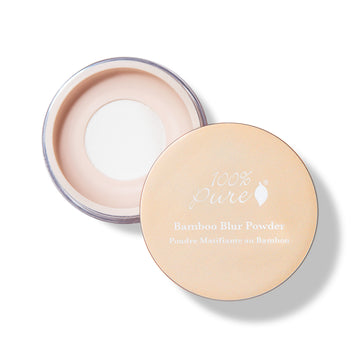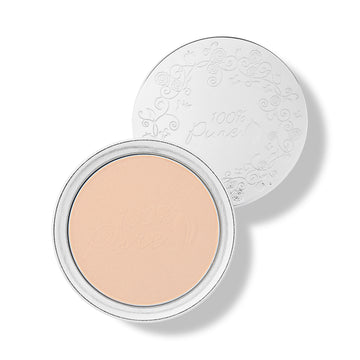Where it’s hiding, why it’s dangerous, and how to avoid it
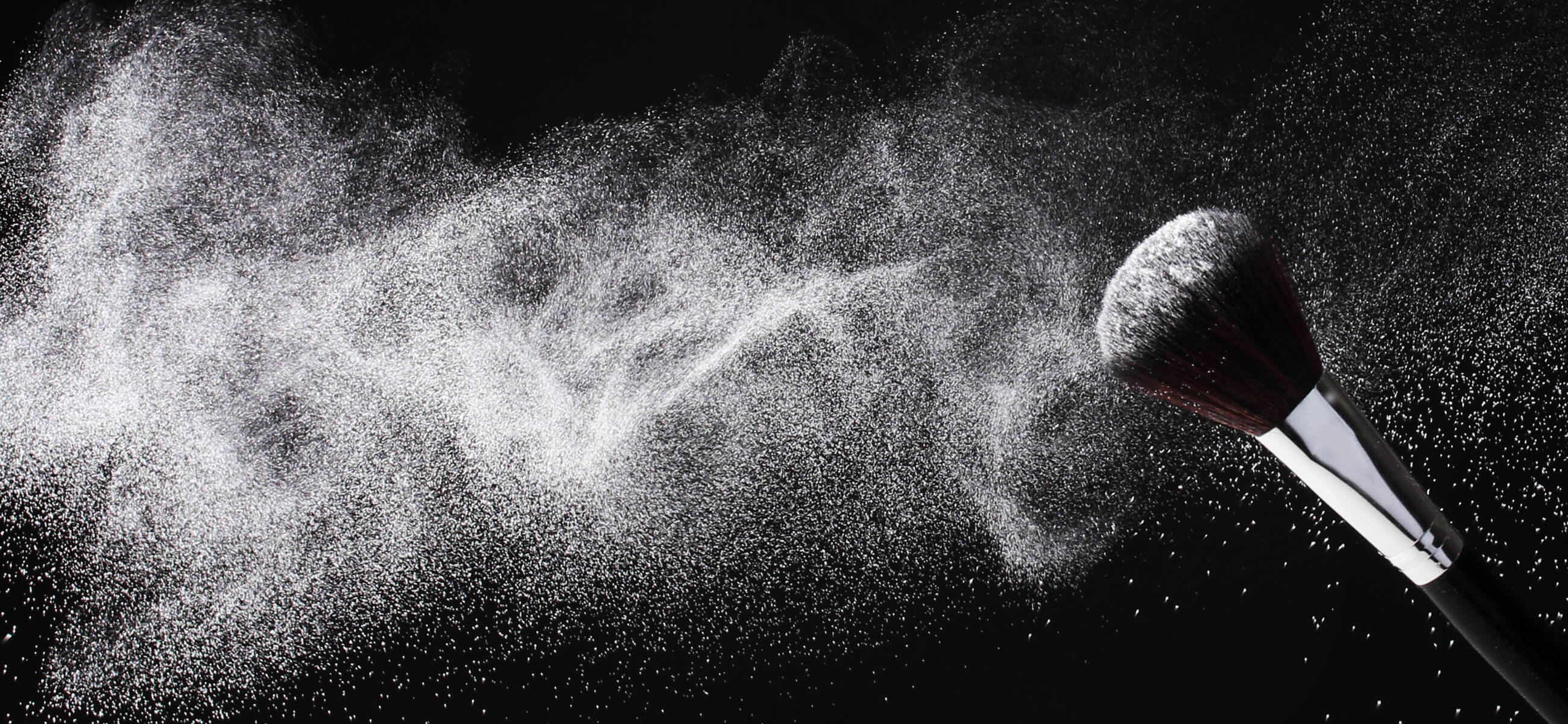
In recent news, you may have seen the words “asbestos” and “cosmetics” in the same sentence. Yes, asbestos: that stuff your parents warned you not to inhale when they were drilling holes in the walls or replacing the insulation of your house when you were a kid. It was recently revealed that the “Just Shine Shimmer Powder” being sold at tween store Justice tested positive for asbestos, leading to a major recall and investigation into the presence of asbestos in talc powder in conventional cosmetic formulas.
Where is Asbestos Hiding?
Over the years, there have been several investigations into the presence of asbestos in certain types of cosmetics. Asbestos and talc can be easily cross-contaminated in nature, explaining why asbestos has been found in commercial cosmetic talcum powder: a key ingredient in powder formulas, dry shampoos, oil blotting sheets, and plenty of otherwise dry cosmetic applications. If the look is matte and the cosmetic company isn’t committed to sustainable and safe ingredients, chances are one of the first ingredients will be talc. Are there alternatives to using talc? Of course! But we’ll get to that later.
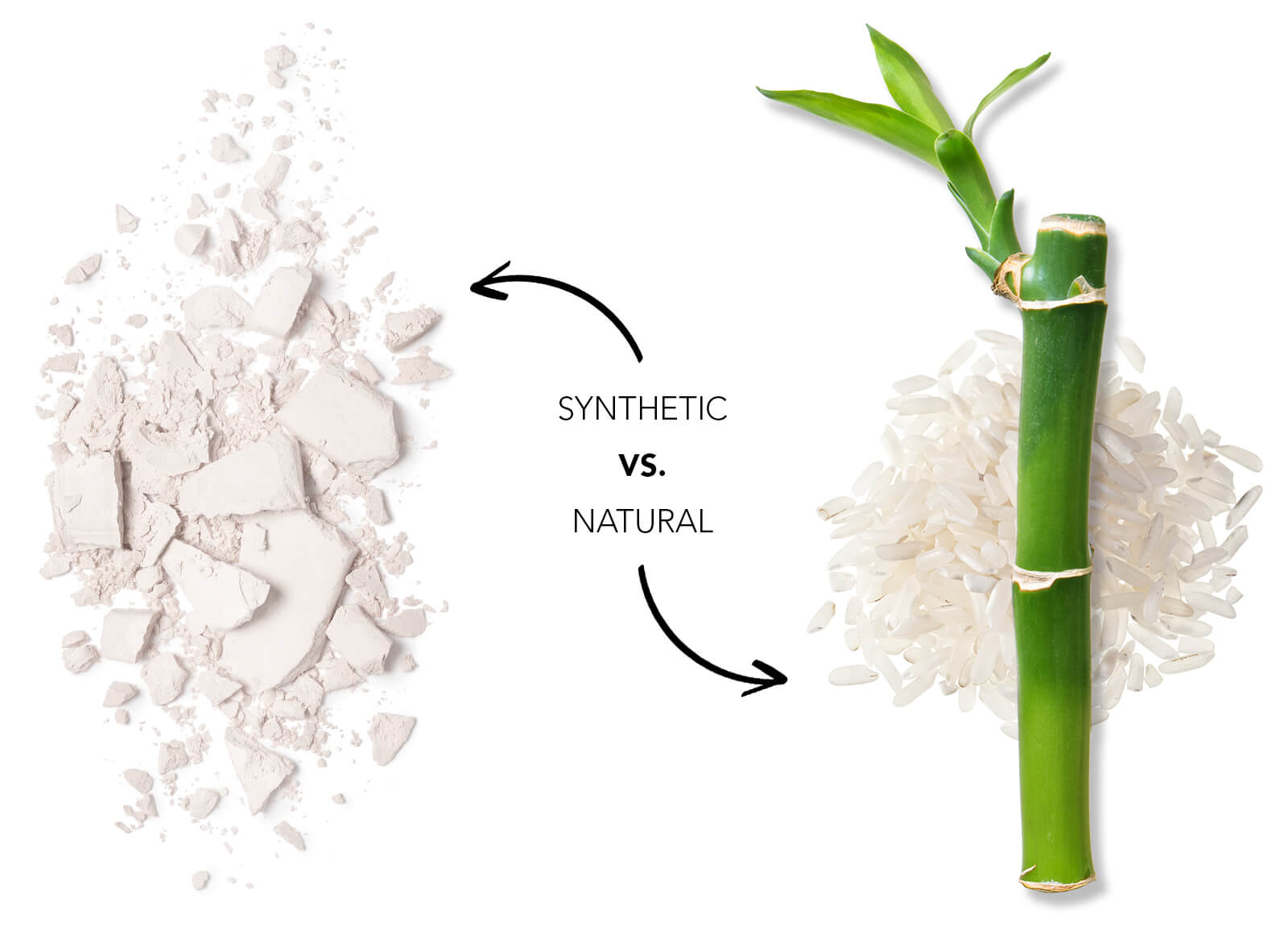
What's commonly used vs. what 100% PURE® uses!
Asbestos is poisonous to humans when it’s ingested or inhaled, and many (but not all) of its uses are currently banned by the Food and Drug Administration. Even secondhand exposure to asbestos can be dangerous -- that should give you an idea of its toxicity. Let’s just say that it’s definitely not something you want in your makeup, or your skin care, or really anything for that matter.
Here’s the catch: talc isn’t banned, and because of its continued and widespread use, many cosmetics are at risk for asbestos contamination. We’re taking a closer look at the alarming link between asbestos and talc, because no amount of on-point cheekbone highlight is worth dousing yourself with dangerous toxins. Armed with this philosophy, we’ve come up with plant-based alternative to talc that keeps toxins far from your makeup bag. Here’s a breakdown of the big picture.
So What Is Asbestos, Anyway?
When you hear the term asbestos, you’re probably hit with an ingrained notion that it’s a toxic substance that has something to do with old houses and dated insulation from the 20th century. That’s the general idea, but to be more precise, it’s a term for a group of silicate minerals made up of microscopic fibers and thin, fibrous crystals. The Environmental Protection Agency has identified six different types of asbestos, all with varying chemical compositions, but with the commonality of being unquestionably cargonagencic across the board.
Mining of asbestos began in the 19th century, and it was used as insulation in ships and buildings, and woven into industrial fabrics and materials. It was lauded as a miracle material and the perfect insulator because of its fire-proof properties, and was used in thousands of residential, commercial, and military buildings throughout the twentieth century. Thanks to its porous and fibrous structure, asbestos was incorporated into everything from military clothing to tiles and roofing (to date, there is no ban on asbestos in clothing). It was at the center of a booming mining industry in several American and Canadian cities, and generated significant wealth for companies involved in its production. The positives uses and effects of asbestos, while well researched and established, end there.
Health Dangers of Asbestos
Asbestos usage hit a wall when mounting evidence that workers involved in its production were suffering from lung and chest cancer at astoundingly high rates. This discovery provoked further investigation, revealing that all minerals in the asbestos group are carcinogenic. They were banned in the US (and heavily restricted and phased out elsewhere) after a series of lengthy litigations, during which it was revealed that asbestos is a direct cause of cancer and chronic inflammation and scarring within lung tissue, as well as long term breathing problems and lung capacity.
Throughout the investigation, it was revealed that the work-related illnesses at asbestos plants and industrial manufacturing sites were all stemming from the toxic material. Diseases stemming from asbestos exposure can take years to appear, so the link between fatal illness and asbestos unfortunately took a while to establish. It was an industry-shattering public health moment, and one of many instances in which an industry hushed up the toxicity of their product for the sake of sales. It’s a bleak story, and represents exactly the sort of practices we don’t believe in at 100% PURE®.
The Talc/Asbestos Link
So with this alarming information available as public knowledge, how in the world did asbestos make its way into a shimmery cosmetic product meant for teens? The link is through talc, a substance you’ve probably seen on thousands of ingredient lists over the years. Talc is one of the world’s softest minerals, and is used widely today in many products: mainly pharmaceuticals and cosmetics. It’s coveted for its ability to improve textural feel of a product and to absorb moisture, so it’s a seemingly perfect mineral addition to powder formulas – everything from foundation to blush to eyeshadows are often crafted with talc. All of those swanky new contouring products being spotlighted on Instagram? Talc. Baby powder? Talc.
Newsletter Subscribe
for more blog updates and exclusive discounts
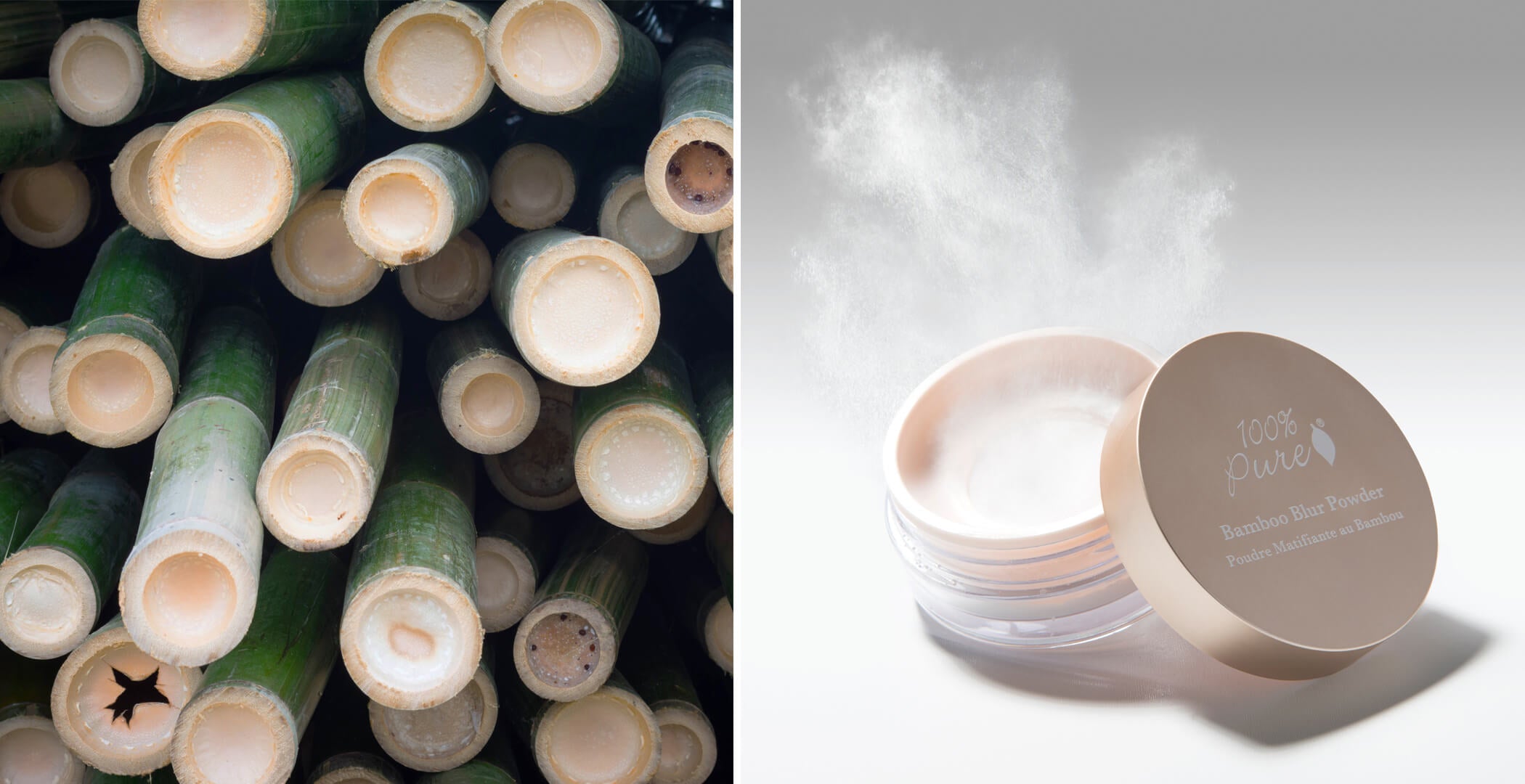
Our Bamboo Blur Powder is made with only a single ingredient: Bamboo Silica. Not a speck of talc in sight!
The problem is, talc is mined from mineral deposits interwoven with asbestos fibers, so there’s a high chance of cross contamination during talc ingredient sourcing. There have been numerous lawsuits over the years in which talc has been found to contain asbestos, but the talc industry continues to be free to monitor itself. There’s little oversight in the industry, and talc remains a cheap and accessible ingredient for mainstream cosmetic companies to use, so there’s not too much incentive to ask questions. Although manufacturers claim to test all of their talc products for asbestos, incidents like the recent “Just Shine Shimmer Powder” recall are not uncommon, and it’s hard to say how many more contaminated products, with potentially harmful levels of asbestos, are still on the market today.
How to Avoid Asbestos in Makeup
Armed with this terrifying knowledge of potential dangers, you’re probably reconsidering buying that drugstore costume makeup palette for your niece. Talc is often present in lower quality formulas, and it’s best to avoid both cosmetics and personal care products that contain it. If you’re really intent on using a product with talc, double check that the company you're using has certified that their talc is free of asbestos. Or, we recommend just sticking with a natural alternative. Cornstarch, arrowroot starch, tapioca starch, and oat flour are all safe alternatives that have some of the same silky and oil blotting properties. Read your ingredient lists and ask questions, because sometimes cosmetics packaging doesn’t make potential dangers as obvious as it should.
What 100% PURE® Uses Instead of Talc
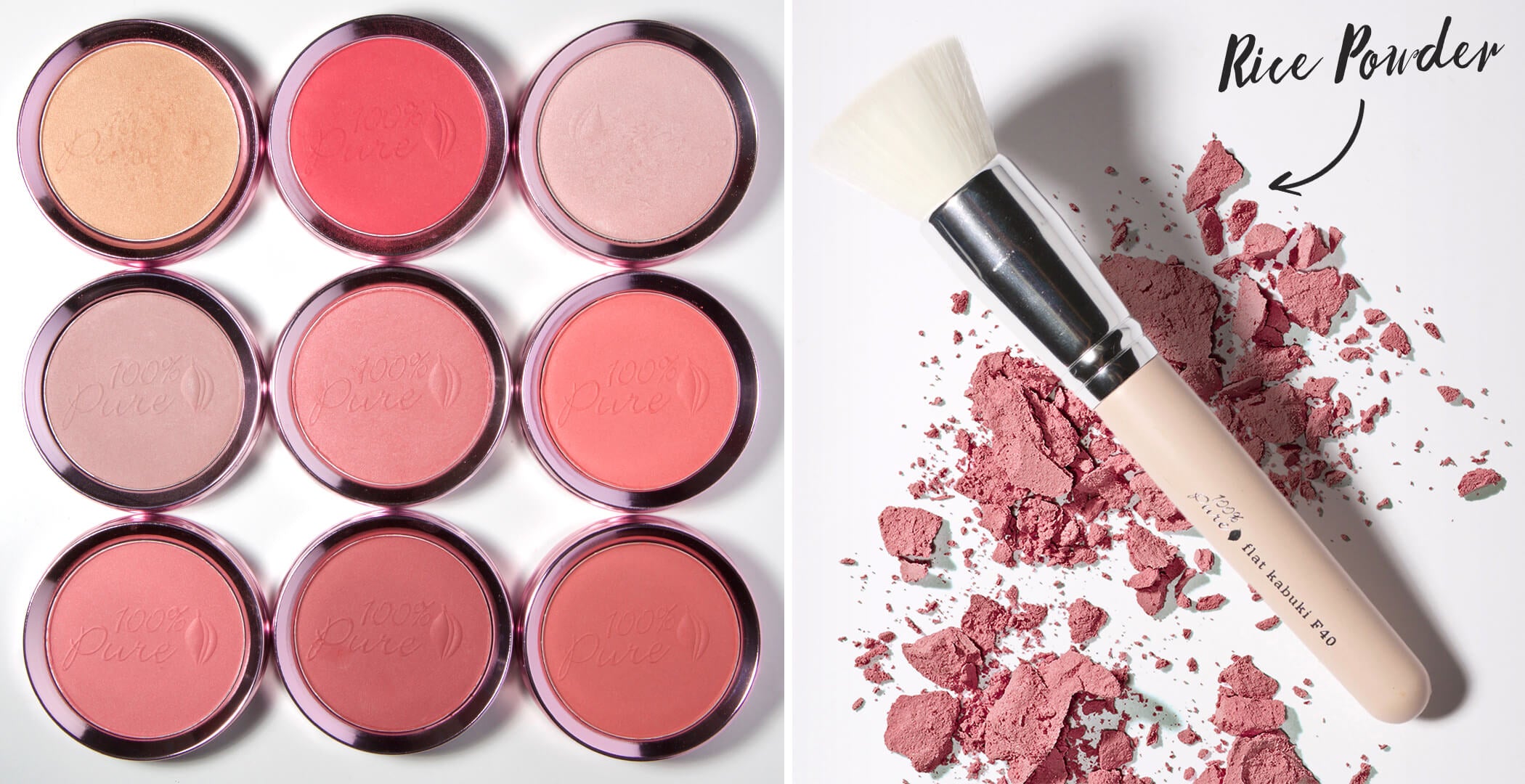
When it comes to terminal cancers and lung scarring, we’re not ones to take risks. So naturally, we’ve opted out of using talc in our natural makeup powder formulas. The mining practices just aren’t safe enough, and keeping our products 100% non-toxic is our top priority. So when we need that ultra soft and velvety matte texture that talc can provide, we opt for Oryza Sativa Germ Powder -- commonly known as rice powder.
Rice powder is a fantastic natural replacement for potentially toxic talc in natural makeup. It has an ultra-soft texture that works well in matte formulas and effective absorbency properties for keeping oil production under control, itchiness at bay, and overall shine banished when it’s incorporated into natural makeup powders. We use it in our Fruit Pigmented® Foundation Powder collection, which is a cult fave thanks to its super lightweight application and poreless finish (rice powder is an all star when it comes to pore minimization). Rice powder is also the main component in our powder blushes (gorgeously pictured above), making it ultra blendable and a perfect vehicle for evenly delivering fruit pigments across skin.
Three cheers for a translucent ingredient that adds body and texture to our powder formulas, and keeps skin calm and balanced. The bonus is that there’s no risk of asbestos contamination or other toxins in any of our makeup – the rice powder we use is safe, naturally derived, and is gentle enough for even the most sensitive skin. We’ve got you covered.
Keep up to date with our blog for more on makeup and skin care safety, natural makeup guides, and new product features!
- Tags: Living, Makeup, September-2017, Susies Lab
We carefully hand-select products based on strict purity standards, and only recommend products we feel meet this criteria. 100% PURE™ may earn a small commission for products purchased through affiliate links.
The information in this article is for educational use, and not intended to substitute professional medical advice, diagnosis, or treatment and should not be used as such.



